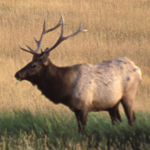| Comments: | Apodemus group. Most closely related to A. chevrieri as reflected by morphology (see that account). Phylogenetic analyses of mtDNA cytochrome b and nuclear IRBP sequences clearly identified A. chevrieri and A. agrarius as sister-species that are part of a larger clade composed of A. peninsulae, A. draco, A. semotus, A. latronum, and A. speciosus, which represents an evolutionary radiation separate from that producing the Japanese A. argenteus and Nepalese A. gurkha (Liu et al., 2004; Suzuki et al., 2003). Noteworthy morphological studies bearing on systematics of European populations are: seasonal changes in gut morphology, and the relationships between allozyme heterozygosity and gut morphology (Borkowska, 1995; Borkowska and Ratkiewicz, 1996); research on the thymus (Bazan-Kubik and Skrzypiec, 1992); and comparisons between postnatal development of German A. agrarius and A. sylvaticus (Pelz et al., 1996). Age and geographic variation in Eurasian, Chinese, Korean, Polish, Bulgarian, and Yugolavian populations documented by results from morphometric analyses (Koh, 1983, 1991; Koh and Tikhonova, 1998; Koh et al., 1997, 1998a, b; Kryštufek, 1985b; Liu et al., 1991; Sikorski, 1982). Karyological data reported by Kang and Koh (1976), Koh (1982), Lungeanu et al. (1986), Wang et al. (1993), Boyeskorov et al. (1992), and Yiğit et al. (2000a). Chromatic, morphological, and biochemical information for Chinese and European populations reported in context of assessing relationships among geographic samples (Hille and Meinig, 1996; Wang, 1985b; Yang and Lu, 1998; Zhao and Lu, 1986). Analyses of mitochondrial and nuclear ribosomal DNA in samples from N China and Korea reported by Han et al. (1996) and Wang and Hung (1997). Other inquiries focusing on Korean populations have produced informative morphometric and chromosomal analyses (Koh, 1988), microgeographic genetic variation detected by mtDNA sequence divergence (Kim et al., 2000), and spermatozoal morphology and function (Lee and Son, 1997). Based on its large body size and mtDNA genotype, Koh (1991) and Koh and Yoo (1992) suggested that the population from Cheju Isl (Korea) represented the distinct species A. chejuensis (recognized as an endemic by Won and Smith, 1999, in their checklist of mammals of the Korean Peninsula), but in later analyses treated it as a morphologically distinctive insular population of A. agrarius (Koh et al., 1998a). An evaluation of subspecies in E China provided by Liu et al. (1991). Included in Mezhzherin’s (1997a) revision of N Eurasian Apodemus; European population reviewed by Böhme (1978b) and Mitchell-Jones et al. (1999), that ranging over Russia and adjacent regions by Gromov and Erbajeva (1995). Innumerable past regional faunal accounts covering distribution, ecology, genetics, and sometimes taxonomy have included or focused on A. agrarius, including these more current reports for: N Germany (Dolch et al., 1994), Austria (Bauer and Spitzenberger, 1996; Spitzenberger, 1997; documentation of first record for country), Italy (Amori et al., 1999; Paolucci et al., 1993), E Baltic region (Miljutin, 1997, 1998; Timm et al., 1998), NW Lithuania (Juškaitis and Baranauskas, 2001). Slovakia (Danko, 1994; Kminiak, 1996; Mošanský, 1994; Stanko, 1995; Stanko and Mošanský, 2000; Stanko et al., 1994, 2000; Uhrin and Benda, 2000), Czech Republic (Bárta and Benda, 1998; Polechová and Graciasová, 2000; Zima and AndŤra, 1996), Translvanian Romania (Istrate, 1998), Serbia and Montenegro (Petrov, 1992), Slovenia (Kryštufek, 1991), Grecian Thrace (Vohralík, 1992), Greece and S Balkans (Vohralík and Sofianidou, 1992b), Bulgaria (Peshev, 1996), Turkish Thrace (Kryštufek and Vohralík, 2001), Korea (Won and Smith, 1999), China and Korea (Musser et al., 1996), Taiwan (Adler, 1995; H.-T. Yu, 1995), and Japan (Kaneko, 1994). The low interpopulation genetic divergence among European populations (Hille and Meinig, 1996) suggests a recent colonization of that region. Sediments dated 5500 years BC have yielded the earliest European fossils (Toškan and Kryštufek, in press), thus bolstering the supposition that A. agrarius is an Asiatic immigrant and a relatively new member of the European fauna (Kowalski, 2001; Martín Suárez and Mein, 1998). |



